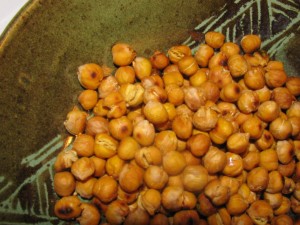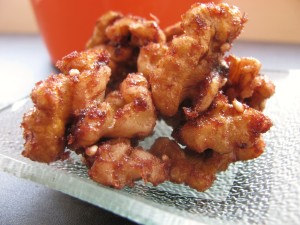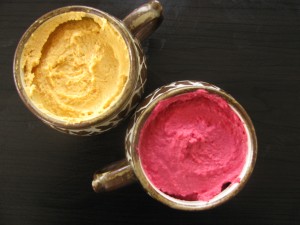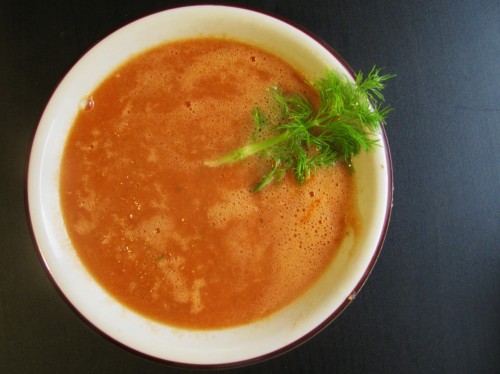After a long hiatus from blogging, I’m feeling particularly inspired by the combination of cool fall weather and the mountains of summer’s fresh produce that are still piled on farmer’s market tables. I’ve been cooking up a bit of a storm. This weekend, I just couldn’t leave without a big box of field tomatoes, and while I planned to slice one up to go with some beet black bean burgers (recipe coming soon), I had four others that needed to be eaten sooner rather than later.
Some searching led me to this straightforward recipe for veggie stuffed tomatoes. Preferring something that packs a bit more protein and cuts some of the refined carbs, I modified it to include yellow split peas and oats (and skipped the parmesan cheese, although if I make it again for company, I’d add some as a treat and extra touch). Here’s what I came up with:
Ingredients
- 1/4 cup yellow split peas, dry
- 4 medium tomatoes
- 1 small carrot
- 1 small onion
- 2 cloves garlic
- 1/4 tsp oregano
- 1/4 tsp thyme
- 1/4 tsp basil (or 3-4 fresh leaves, thinly sliced)
- 2 tsp olive oil
- 1 tbsp white wine (or veggie broth)
- 2 tbsp large flake oats
- 1 tbsp milled flax seed
Instructions
- Cook the split peas – rinse them and then boil them for about half an hour.
- In the meantime, cut a thin slice off the top of each tomato. Reserve the tops. Scoop out the innards and put them in a bowl, leaving about a half inch shell.
- Grate the carrot and onion, and crush the garlic. Saute the mixture along with the spices in the oil until tender. Add the white wine (or broth) and let simmer for a few minutes, until some of the liquid has evaporated.
- Remove from the heat and add the drained split peas once cooked. Stir in the oats and flax seed.
- Preheat your oven to 350°F. Fill the tomato shells with the split pea mixture and put the top back. (I accidentally threw my tops out, and they weren’t nice-looking anyways, so I topped mine with a slice of onion, which was a nice addition.)
- Bake for 15-20 minutes.
Simplify, substitute, make it your own!
I liked the yellow split peas to make for a nice, autumn-y colour combination, but green split peas, red lentils, or possibly green lentils could also work well. These would make for a nice side dish or an appetizer.













